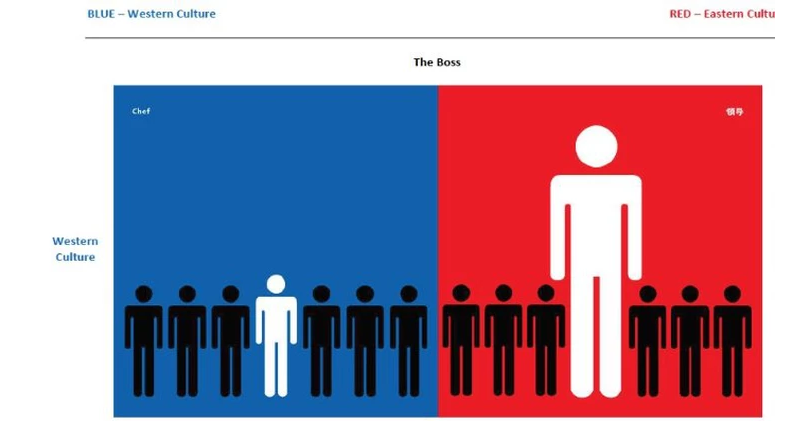Have you ever hired a top-performer from another organization only to find that person did not fit your company?
Have you ever left a company you thrived in for more money or a better position somewhere else only to regret the decision?
If you answered “Yes” to either question, you encountered a culture difference.
It’s difficult to “see” culture until you experience first-hand how different it can be from one organization to another. In reality, no two organizations have the same culture or values. The problem, however, is that different companies often use the same words to describe their culture and values. Indeed, they even adopt similar models for learning and leadership development without realizing how inappropriate a cookie-cutter approach might be.
My mission in life is to help people realize that your organizational culture is unique and that being clear about that culture and true to it is the source of your competitive advantage. What is culture?
Culture runs deep in each organization, and it eats strategy for breakfast every time. Culture is based on the company’s founders, its history, and the mindset behind the strategic business plan. Like people, organizations do not change their values and culture just because some expert consultant wants them to. This is because the culture is the basis for the behaviours and beliefs that the people within that culture think are right and true. So why would you adopt someone else’s culture?
If your culture is unique, meaningful, and the source of your competitive advantage, why would you adopt the culture of another organization? This is effectively what happens when you use a leadership development program based on behaviours that are not the ones that lead to success in your own company.
This is a danger in any company, in any part of the world, but I have noticed that it is particularly frequent in Asia. The companies that I have worked within Asia have vibrant, unique cultures that are driving extraordinary performance and growth, yet they are often adopting behavioural competency models not specific to their company or to their region of the world. Instead, they rely on programs based on behaviours that fit organizations in North America or Europe. As a result, I have seen organizations become confused, with leadership and direct reports out of step, and behaviours and rewards misaligned.
To put into place a behavioural competency model and leadership development curriculum you must have first define the behaviours unique to your organization and your local market. While aspects of Western leadership models and the off-the-shelf programs overlap behaviors in Asia there are also key elements that will not work. For example, in the West leaders generally look to the future, not the past as their orientation; while in Asia tend to draw on and respect the lessons of the past as a way of making decisions about the future. Similarly, leaders in the West often say things to provoke differences of opinion; while in Asia a leader’s more provocative statements may go unchallenged.

By using Western-based models, companies in Asia are focusing leaders on behaviors that will not build trust, sustain cohesion or drive performance in the long-term. Build your own system
Asian companies, like companies everywhere, must build behavioural models that fit their values and leadership competencies. When models are unique to your organization, they form the basis of learning experiences that reinforce the behaviours and values of your company, not someone else’s company.
Why do companies around the world adopt standardized models of behaviour? The developers of such models believe in the premise of ‘transferable validity’. This means that what has worked for a few firms will work for all. The premise is that behaviours and values are universal, and that assumes there is a ‘right’ set of values and behaviours for everyone. This is reinforced by all the business literature, which tells us we must mimic the successes of other companies. But if this were true we probably would have only one religion and one perspective on right and wrong. We would have only one book on leadership and one book on values.
While some behaviours might overlap between organizations, you will not capture the heart and soul of your organization unless those competencies are developed within your organization. Competency dictionaries or computer programs will not generate a perfect model for your company. For example, a world-renowned hospital we work with to develop its values and leadership behaviours came up with the word “humility.” I have never seen this word in any competency model anywhere else in the world. Yet, it was part of that organization’s cultural DNA going back over a hundred years. If we had not included it, we would not have accurately captured the organization’s values in its competency model, nor would we have helped the organization tap its competitive advantage and sustain its culture for the next one hundred years.Furthering the research
I have been working in this field for three decades, making my case for the uniqueness of culture, values, and behaviours one company at a time. In Singapore, on April 15, 2015, I will be exploring these ideas in more depth at a pre-summit workshop at the Salvo Global Learning Summit. During this session, we will debate what makes a company’s behaviours unique and show how to use them to develop future leaders. Most importantly, perhaps, I plan to use this opportunity to further my research on the problems that arise when Asian companies adopt standardized behavioural models instead of developing them in-house. I would love it if you would join me and contribute your experiences and insights to the discussion.
(Pictorials of the cultural differences between East and West, designed by Liu Young who was born in China and educated in Germany.)
 DS Cohen & Associates
DS Cohen & Associates
